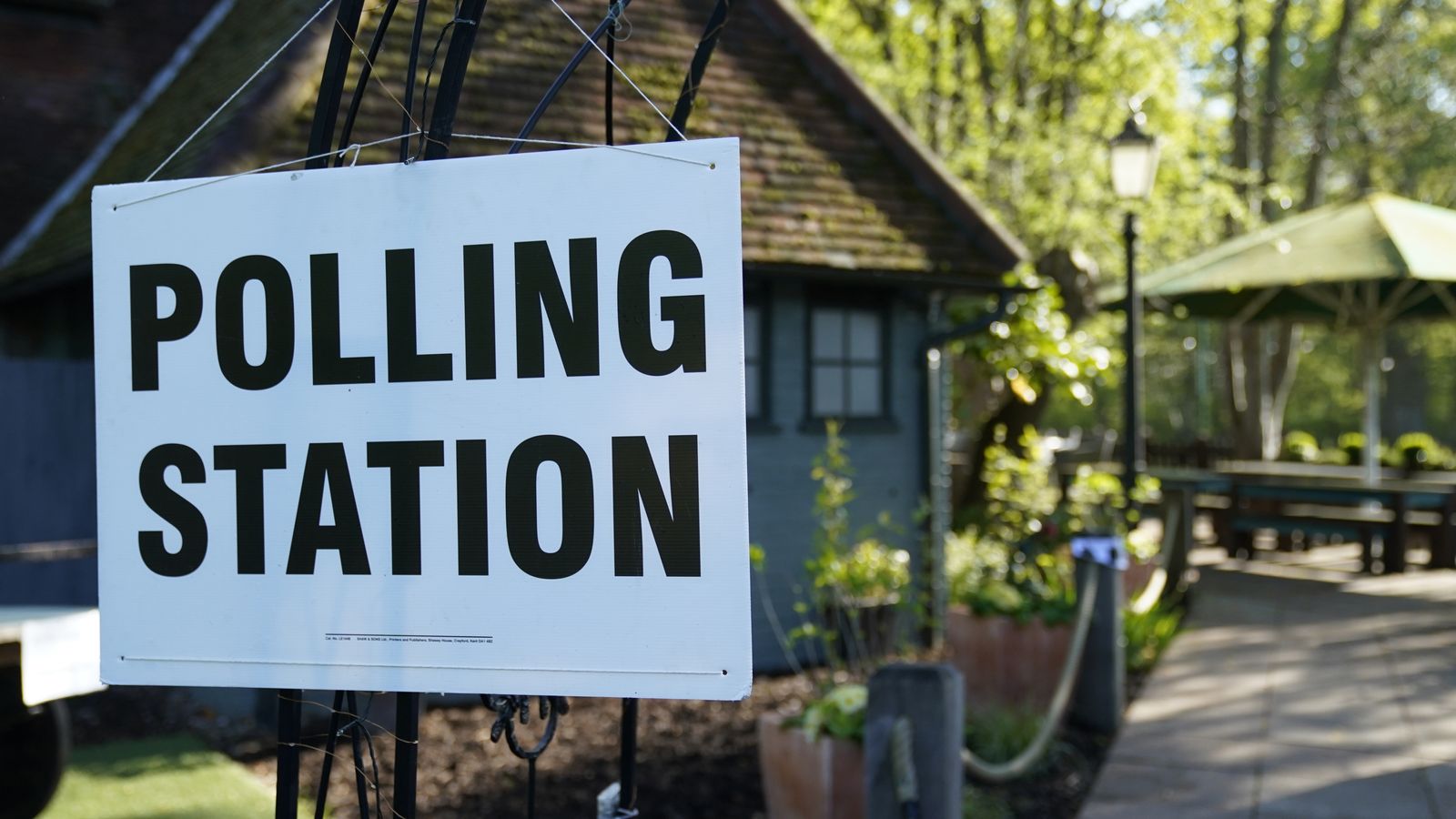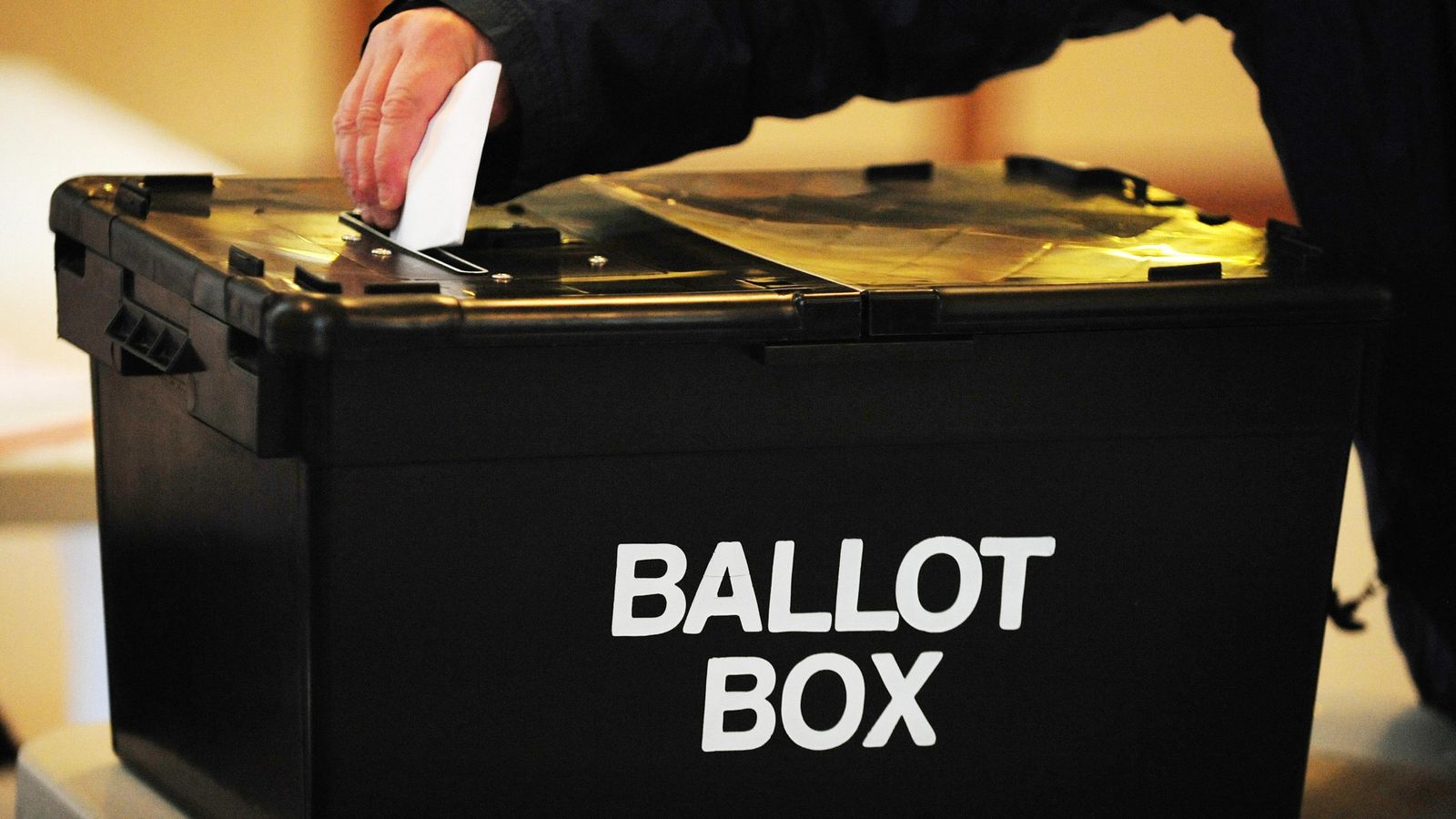
A historic night saw Labour overturn the biggest-ever Conservative majority in a parliamentary by-election.
The seat of Tamworth became vacant when Chris Pincher resigned after losing his Standards Committee appeal.
Mr Pincher secured a 42.6% majority in 2019. In a catastrophic loss for the Tories, Labour have overturned what was one of the Conservative’s safest seats.
With a 23.9 point swing in Labour’s favour, it knocks Selby and Ainsty into third place and becomes the second biggest Conservative defeat to Labour on swing.
They did it on a turnout figure of 35.9%, the lowest ever turnout for a seat that’s changed hands in a by-election. It really is a record-breaking result on all fronts.
Politics latest: Second by-election defeat on terrible night for Tories
The Tamworth result now means that the three biggest ever overturned Tory majorities at by-elections were in this parliament.
Tamworth gets the top spot, Tiverton and Honiton in 2022 comes second and Shropshire North in 2021 claims the bronze medal.
In a double blow, the Conservatives have also lost Mid Bedfordshire to Labour.
Labour’s Alistair Strathern replaces Nadine Dorries as the MP after her long-awaited resignation. The Conservative vote share collapsed and Labour overturned a 38.1% majority.
This seat is the first recent contest where both Labour and the Liberal Democrats have campaigned as if they could win it. It was expected that this would split the challenger vote enough for the Conservatives to hold on.
In the end, there was a 20.5 point swing from Conservative to Labour, and a 19.6 swing from Conservative to Liberal Democrats – both swings big enough to take the seat.
So while the vote did splinter, Labour persuaded enough of the electorate and came out on top.
It’s also a result that makes the by-election league tables. It’s the sixth biggest swing from the Tories to Labour.
This is the seventh biggest Conservative majority overturned, meaning half of the largest 10 Conservative defeats have been in this parliament. Four of them while Rishi Sunak has been PM.
They’re trying to brush off these colossal losses as mid-term blues, but this is at odds with their “time for change” message.
Turnout was 44% in Mid Bedfordshire, making it the third biggest turnout drop where a seat has changed hands.
This could be because a greater number of Conservative voters stayed home, however there’s likely to be other factors at play.
Voters don’t feel the same strength of attachment to political parties as they used to, so they’re more likely to switch who they vote for between elections.
Read more:
It’s hard to predict what will happen next for Sunak
When thinking about what this might mean for a general election, it’s worth remembering the scale of the victory Labour need to win the next general election.
They need a bigger swing than Tony Blair’s landslide.
They must recover from their biggest defeat in over 80 years to make 124 gains – something they’ve only ever done three times.
However, swings like these allow Sir Keir Starmer to say that’s a feasible goal. Labour need just over half the swing they achieved in Tamworth to win a majority of seats.
Plus, their recent Rutherglen victory allows them to say they can win Scotland.
But these by-elections had outgoing MPs involved in widely known controversies or scandals. Whether Labour can replicate this success in a typical electoral context remains to be seen.
What we do know is that the scale of the Conservative defeat has made the record books.
Dr Hannah Bunting is lecturer in Quantitative British Politics at the University of Exeter and Sky News Elections Analyst












